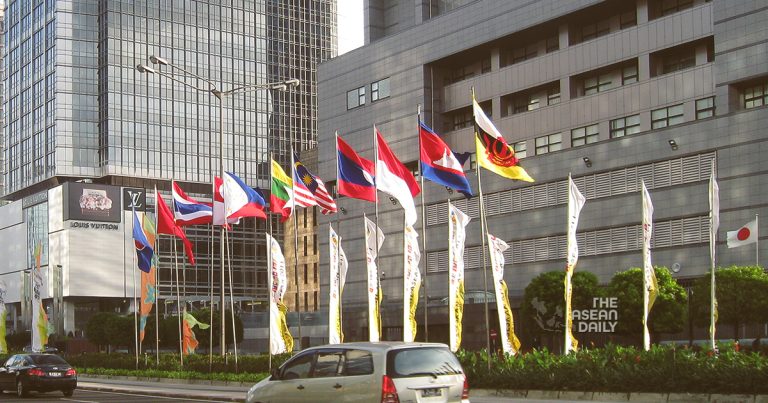15-8-2023 (BANGKOK) As the tides of competition between two global giants, China and the United States, sweep across the Southeast Asian region, experts are urging the Association of Southeast Asian Nations (Asean) to adeptly shape its foreign policy. Simultaneously, they emphasize the importance of empowering the younger generation with the skills necessary to navigate an unpredictable future.
Speaking during a recent panel discussion titled “Asean and Thai Foreign Policy” in commemoration of Asean Day on August 8 at the Foreign Affairs Ministry, Assoc Prof Jittipat Poonkham, Associate Dean for Academic and International Affairs of the Political Science Faculty at Thammasat University, highlighted the mounting tensions between these two global juggernauts. He forecasted that this escalating rivalry would eventually compel Asean member states, including Thailand, to align themselves with one side or the other.
Drawing a parallel with the dynamics of the Cold War era, Prof Jittipat Poonkham noted the emergence of two dominant powers and the concomitant emphasis on geopolitics. This has placed Asean, including Thailand, in a predicament regarding which side to embrace. Instead of choosing sides, he advocated for Asean countries to unite and progress collectively as a team.
He drew an analogy between Thailand’s foreign policy and the flexible nature of bamboo, suggesting that policies should be adaptable, balanced, and pragmatic. To navigate the Asean context effectively, he emphasized the need for Thailand to balance its relationships with both major powers and select the paths that best serve its interests.
He stated, “Thailand must possess vision, political resolve, and foresight to anticipate the prevailing winds and the trajectory of these powers.”
Concurrently, he stressed that Asean should assume a role of “leading from the middle.” This approach entails focusing on middle power dynamics to act as a counterbalance between the two superpowers, thereby preserving Asean’s centrality. Collective leadership among Asean member states would amplify their political influence, bolstering the organization’s ability to navigate the superpower rivalry.
Piti Srisangnam, Asean Foundation Executive Director, contended that Asean stands at a pivotal juncture, necessitating forward-looking strategies beyond its Asean Community Vision 2025, which is slated to conclude in two years.
Looking ahead to 2045, Srisangnam envisioned Asean as a community predominantly comprising youths and children. He contrasted this with other countries grappling with aging populations. In this future scenario, more than 250 million individuals aged between 15 and 35 will inhabit the Asean region, accounting for approximately one-third of the projected population of over 800 million.
To prepare this emerging generation, Srisangnam underscored the importance of nurturing empathy, strategic communication, camaraderie, and proficiency in digital technology, entrepreneurship, lifelong learning, languages, and industry-specific skills.
“To shape Asean’s prosperity, we must cast our gaze to the year 2045 and contemplate the attributes we aspire to possess and the preparations required,” he remarked. “Our considerations should revolve around four pillars: people, time, budget, and knowledge.”
“We are an ascending economy, and hence, we must allocate a specific budget to propel our region forward. Yet, the significance of people and knowledge cannot be overstated. We must undertake substantial efforts to ensure the readiness of our regional populace,” he added.
Soontorn Chaiyindeepoom, Thailand’s Representative on the High-Level Task Force for Asean Community Vision of Post 2025, elucidated the measures being undertaken to pave the way for the future. A high-level task force has been established to draft the forthcoming Asean vision. After 1.5 years of deliberations, the task force has ratified the incorporation of the goals from Asean Community Vision 2025.
These encompass objectives like preserving Asean’s unity, cohesiveness, and resilience, transforming it into a rules-based community that remains agile and responsive in the face of contemporary and future challenges. Chaiyindeepoom further outlined aspirations to establish Asean as a nuclear-weapons-free zone and contribute to global non-proliferation efforts, while also advocating for the safeguarding of human rights and fundamental freedoms.
He affirmed, “We are committed to boosting economic resilience and competitiveness while championing social inclusivity.” As Asean navigates the complexities of a rapidly changing world, these strategic insights and initiatives hold the promise of shaping the region’s destiny for generations to come.




